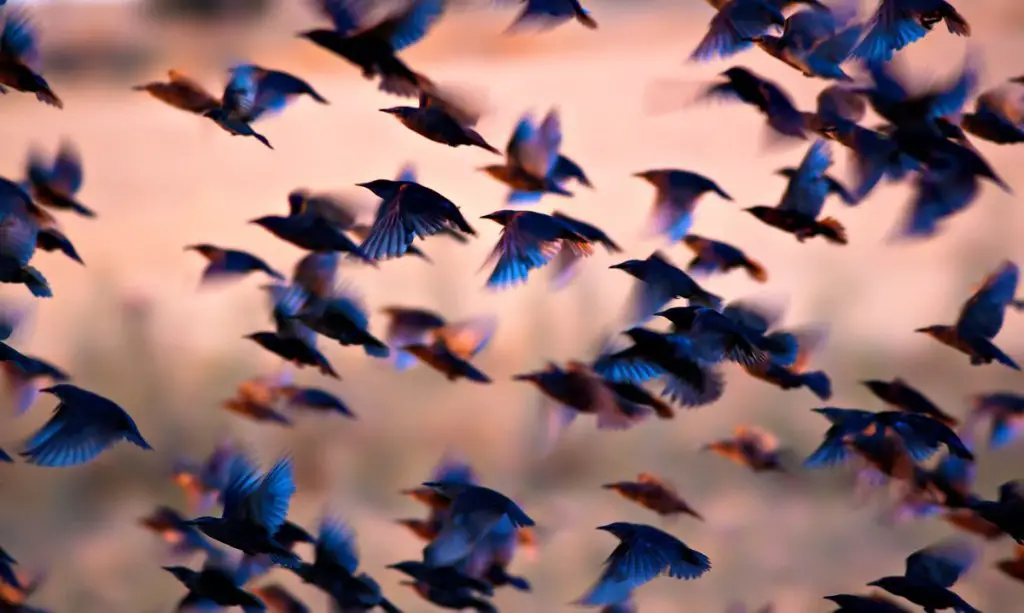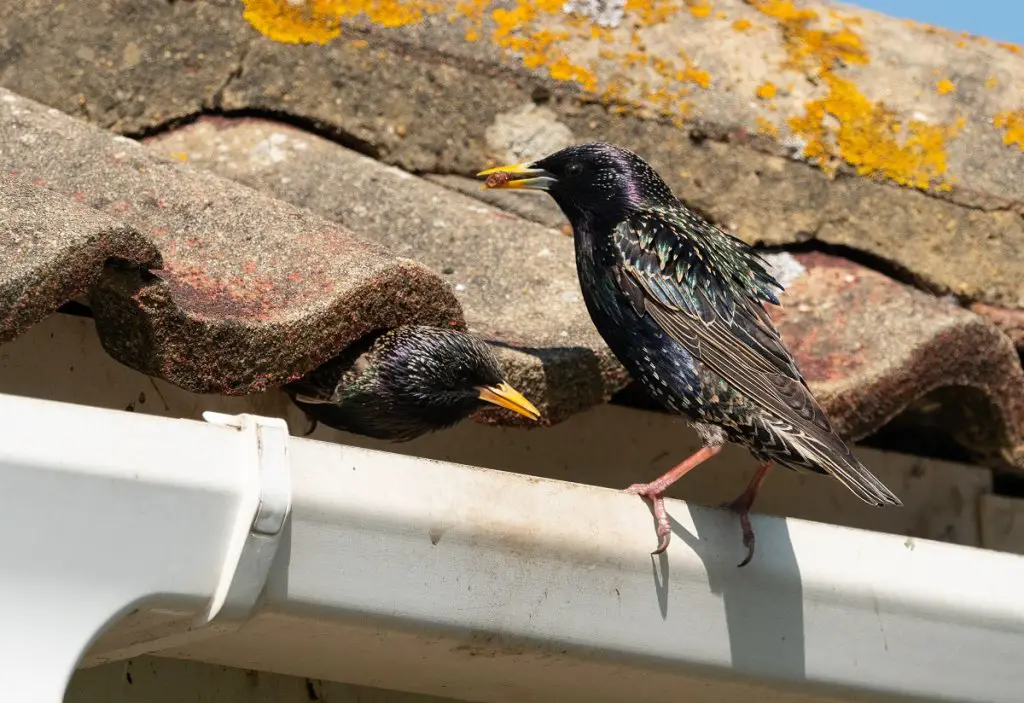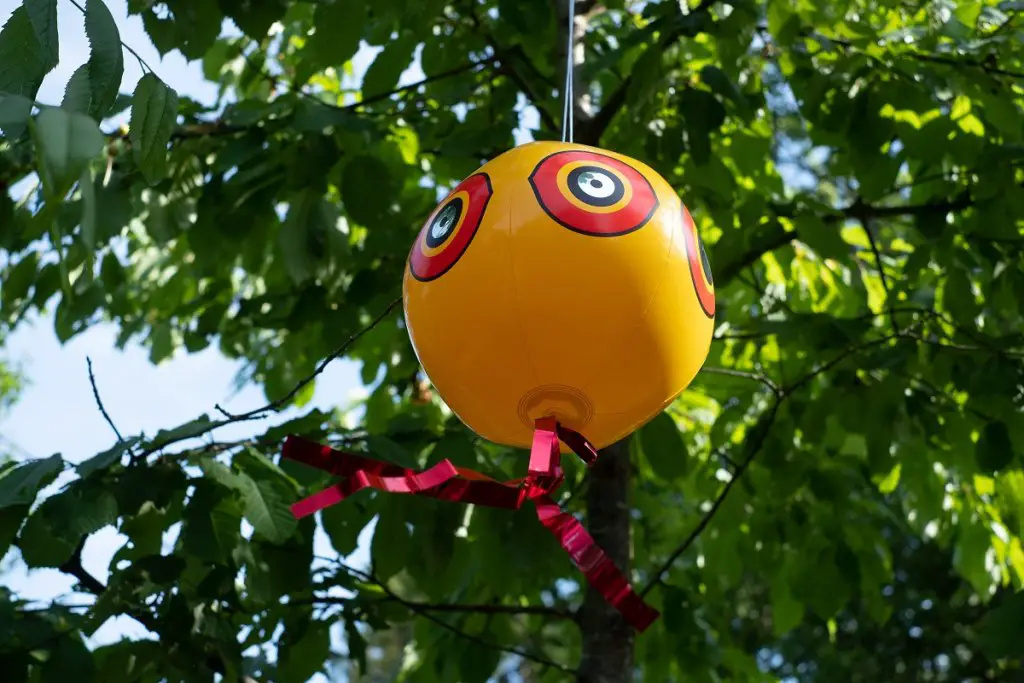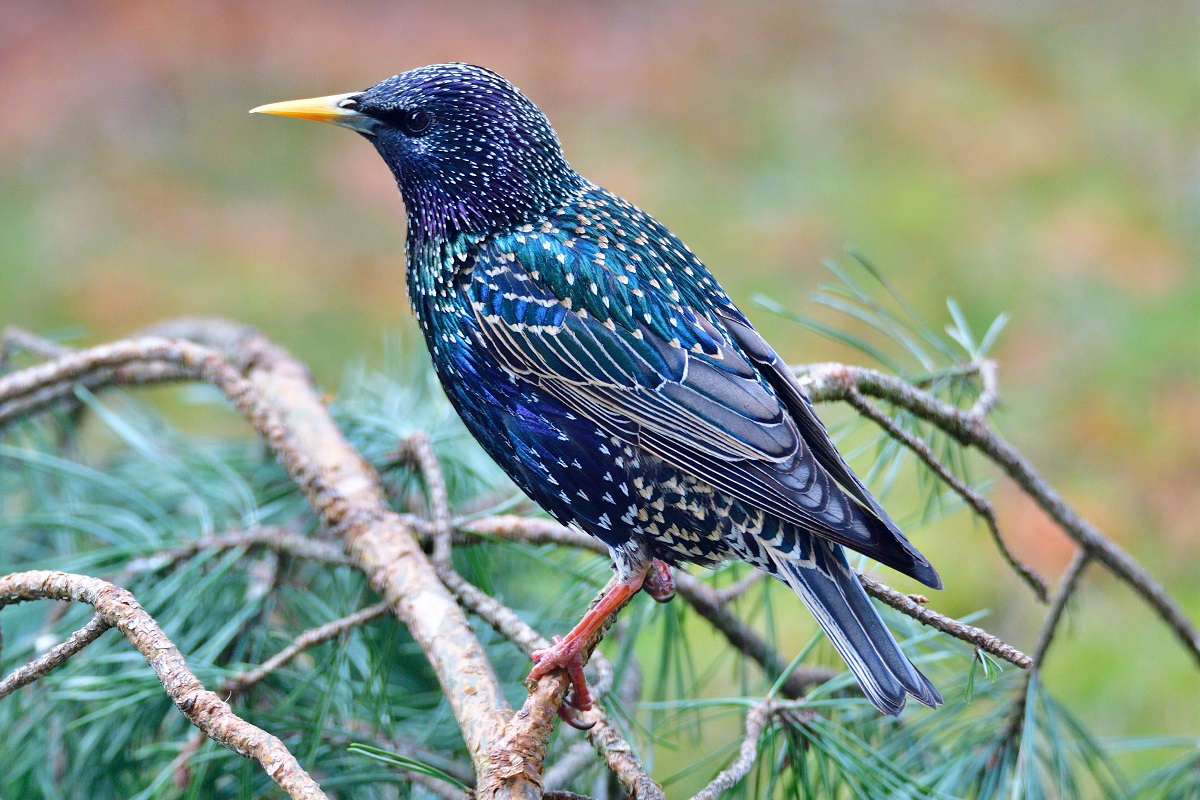The European Starling is a beautiful bird that shimmers in the sunlight. However, these aggressive and invasive non-native birds can drive away other songbirds and damage your home. Want to keep starlings out of your backyard? Check out these clever tips below!
European Starlings are quite a problem in the United States. Starlings aren’t native to North America, yet they have overtaken the bird population. Both farmers and city dwellers find them destructive to property and crops.
If your backyard is littered with large flocks of aggressive European Starlings, check out these simple and humane steps to tell Starlings to move along.
Why Are There So Many Starlings In My Yard?
In the 1900s, 100 starlings were set loose in New York City to bring all of the birds Shakesphere mentioned to America. It sounded romantic, at least at the time. From those 100 birds, there are now over 200 million starlings peppered through North America, and many refer to them as pest birds because they are aggressive and can cause a lot of damage.
The story may be more legend than truth, but the results are the same.
Starlings love wide open and grassy areas, so if you live in a residential area, starlings are a fact of life. If starlings seem to be a relatively new problem, your lawn may have a pest problem since starlings love to dine on mealworms, grubs, and other lawn pests.

On the downside, they are harmful or annoying in three other ways.
- Unfortunately, they love fruit and sprouting crops, so a flock of them can strip trees and gardens.
- Starlings are considered nuisance birds because they travel in large flocks and are considered bully birds. Once starlings descend upon your backyard feeders, they often drive away more timid songbirds like bluebirds, wrens, chickadees, nuthatches, and cardinals.
- Starling nests are also a problem because they often use smaller bird nest boxes or nest in gutters, duct work, or anywhere that can cause potential damage to your home.
They are a nuisance in more ways than one, but there are some clever ways to deter them from your home without repelling smaller songbirds.
Tips To Repel European Starlings At Feeding Stations
Invest in the Right Birdfeeder
To keep starlings away, the best course of action is to invest in a bird-repellant birdfeeder. You can pick up a starling-proof birdfeeder on Amazon that will attract smaller birds but keep the large birds away (look at you, Starlings!).
Starling-proof birdfeeders have a large cage around the outside that is big enough for small birds like Bluebirds but too small for aggressive pest birds. It not only keeps Starlings in large numbers away, but it also deters blue jays, grackles, blackbirds, woodpeckers, and other bully birds.
Select Hard Birdseed
Starlings have soft beaks, which are perfect for bugs but not ideal for hard birdseed. Things like sunflower seeds, cracked corn, peanuts, and safflower seeds are too crunchy for starlings to eat. Opt for a Nyjer seed mix composed primarily of harder nuts that will attract other songbirds but won’t appeal to starlings or grackles.
Try A Suet Feeder
A suet feeder is an excellent solution if you want to feed friendly backyard birds but want to keep starlings away. Upside-down suet feeders attract smaller birds, but they keep other pests like starlings, grackles, blue jays, and even squirrels from dominating your backyard birdfeeders.

Tips To Get Rid Of Starlings Around Your House
Starlings will scare away other songbirds, which is bad enough. However, they can also damage property when they nest near your house. They often build nests in gutters, which can cause water to back up and create drainage issues. During the breeding season, a pair of mated Starlings raise two broods per year, and a large flock of starlings roosting near your house is a problem. However, there are some easy (and humane) ways to prevent this.
Install bird spikes
Installing bird spikes along their roosting areas prevents Starlings from creating nests. Most bird spikes are made from stainless steel so that you can install them once without the fear of rust over the years. Place them anywhere starlings roost, such as gutters, and the starlings will simply fly away when it’s time to roost. It won’t hurt the bird. It just tells them they can’t roost in your gutters!
Try a scarecrow
If you don’t like the idea of installing bird spikes that don’t exactly look aesthetically pleasing, an old-fashioned scarecrow works well. However, starlings aren’t afraid of humans, so you need to invest in a scarecrow that resembles one of their predators, such as an owl or a falcon.
Keep in mind that this bird-deterrent isn’t just for starlings. Other friendly songbirds in the area may steer clear of your backyard if they notice your scarecrow.
Remove Food and Water Sources
When all else fails, removing birdfeeders and birdbaths is the last step to keeping starlings away. If you remove food and water sources, they will likely travel to a new area searching for food and nest elsewhere.
Of course, this method isn’t ideal if you love birdwatching from your backyard, but it will save you the hassle of potential water damage if starlings create a problem in your gutters!

Are Starlings Good For Anything?
European Starlings are beautiful and love dining on pesky insets during the summer months. It isn’t all bad when it comes to European Starlings, and they have some positive aspects.
First of all, they are excellent pest-eliminators. In the summer months, they dine on pesky insects and can keep bugs out of your garden and out of your lawn.
Plus, they look stunning. Their shimmering star-like feathers are a sight to behold. In small numbers, the European Starling is lovely. However, it’s rare ever to see a singular European Starling.
They travel in large flocks and can get quite aggressive. If you want a diversified feeding station for your backyard birds, follow these tips to draw invasive Starlings away.

